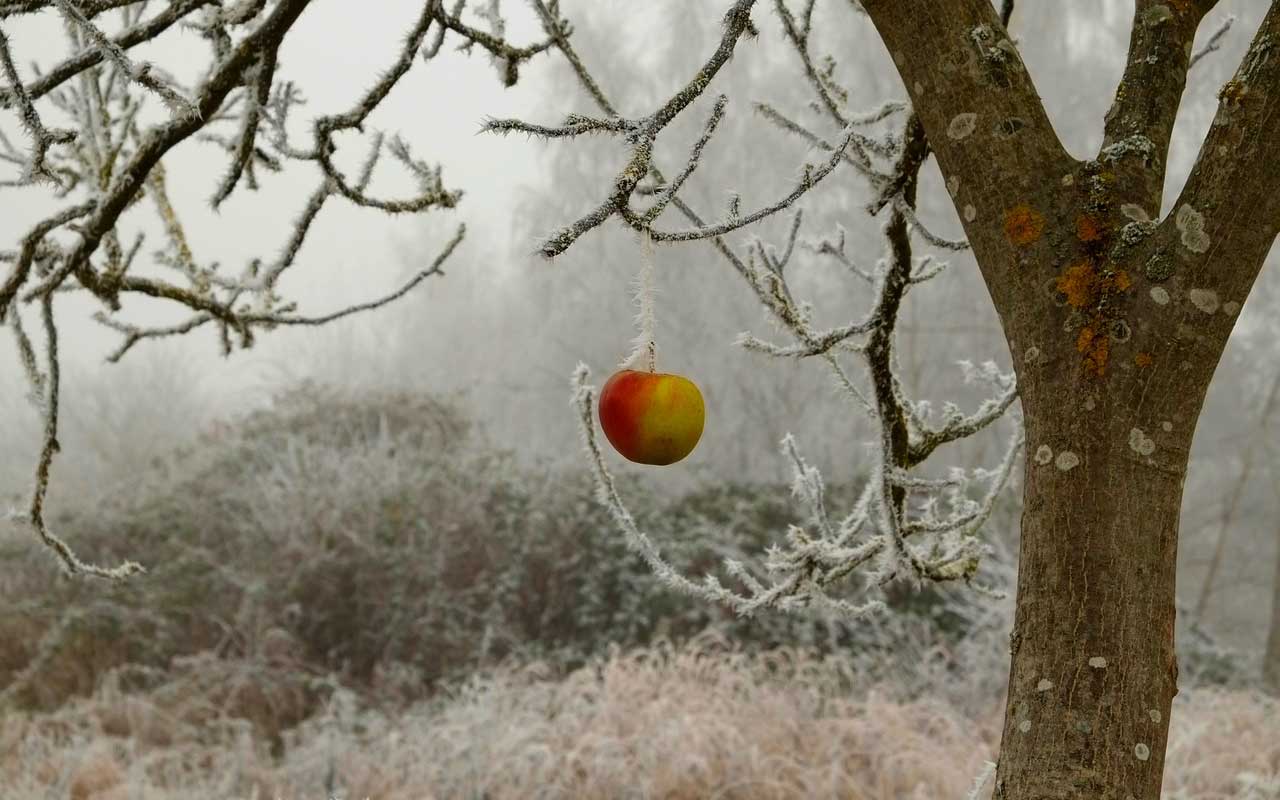When deciding how and where to cut a branch, bear two things in mind. First, any cut surface that sits horizontal could pool with water (risking rot or disease) so an angled cut will be better. Don’t leave little stubby branches; they don’t look good and aren’t likely to have many fruiting buds. Either cut right back to a main branch or don’t bother this year.
We wouldn’t recommend using a ‘wound dressing’ or pruning paint on cut ends of branches. A properly pruned tree (with angled, clean cuts) will seal itself from infections and diseases. If you are particularly concerned about a cut end or even a crack in a tree, consult a tree surgeon or talk to one of our plant experts.
Before February, you might want to think about applying a winter wash or grease band to the trunk of your tree to prevent winter moth caterpillars. We wrote about these in our November 2021 garden jobs article (insert link) or you can chat to our Garden Centre team for further advice.
If your tree has been neglected for years, don’t try to get it back under control in one mammoth pruning session. You are likely to do more harm than good – and potentially cause the tree to send out masses of regrowth in the spring! Plan to do the work over 2 or 3 winters, focusing on the three Ds in year one.
If you need to remove a large branch, try doing it in sections as it will be much easier to handle. Reduce the side branches first, then reduce the length in shorter sections at a time.
Remember that horizontally growing branches tend to carry more fruit than vertical ones; they are usually easier to reach for harvesting, too!
Finally, people sometimes worry about pruning their own fruit tree as they think they might do it wrong or cause damage. As long as you have clean tools and are working safely, you are unlikely to do any damage; indeed, every tree will respond to pruning with new growth. What do we mean by doing it wrong? Potentially, perhaps, that you don’t get any fruit. By pruning in winter, before the tree has started growing again, that is also unlikely. However, as you get to know your tree, you will learn where it grows its fruit (on the new season’s growth or on older wood) so you can adapt your pruning technique a little to suit. In the meantime, if you’re not getting great fruit anyway, you really don’t have much to lose by giving it a go!
For further advice on pruning apple trees in the winter, the RHS website has great tips.


